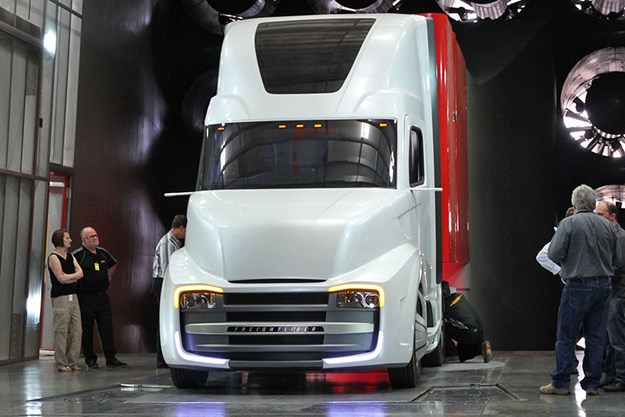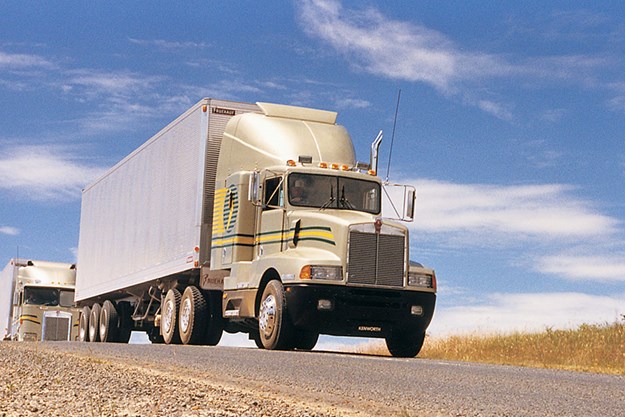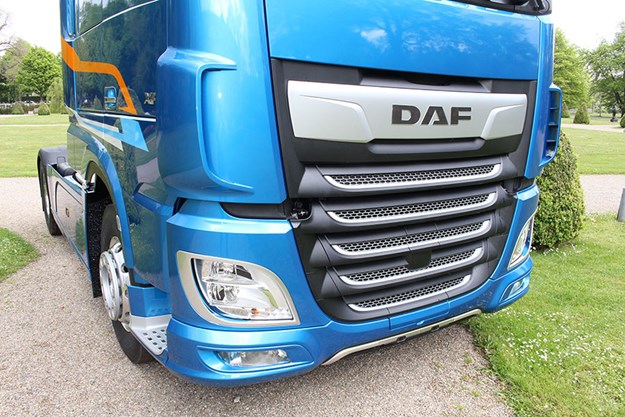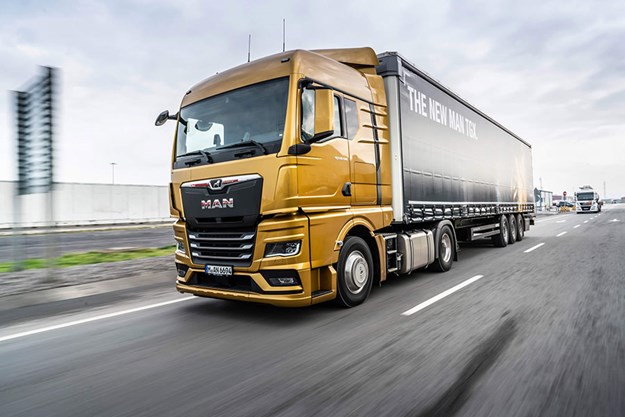Aerodynamics! It’s one of those seemingly endless pursuits. For cab-over designers particularly, it’s a challenge greatly magnified by the inherent demands of turning a sizeable slab of metal and glass into a sleek, efficient workhorse
In those milder, less vexatious days before virus, vitriol and violence conspired to make America weird again, there was a trip in mid-2019 to Daimler Trucks North America (DTNA) headquarters in Portland, Oregon.
The main objective, obviously enough, was to see how much work Freightliner had done in preparing its Cascadia conventional for the Australian market prior to the truck’s launch here a few months later.
Thankfully, like most trips to DTNA in Portland, 2019 also included a presentation at the full-scale wind tunnel – described by one wit as the ‘tunnel of shove’ – just across the road from head office.
This is a truly impressive built-for-purpose facility designed entirely to determine the most efficient and practical aerodynamic shape for shoving through the air a full-size, road-going truck and all the components that hang off it. Not just Daimler’s Freightliner or Western Star trucks either, but the heavy-duty trucks of every competitor on the North American market; several sitting in plain view in a nearby yard.
As the dedicated ‘air heads’ working inside the facility are only too happy to affirm, how do you know your truck is the most aerodynamically efficient unless you put it up against everyone else’s? Fair point, and with figures, charts and graphs to back them up, they weren’t shy about citing the market-leading Cascadia as the best in the business. The aerodynamic business, that is!
Funny though, at one time or another we’ve heard most of America’s top truck makers claim much the same thing at the launch of a new model. What’s more, over the past decade, all major American brands have been heavily involved in the US ‘Super Truck’ initiative defined as “… a major DOE [Department of Energy] technology innovation program with many industry partners representing a broad segment of the US industrial base of heavy tractor-trailers.”
 |
|
As part of the US government’s ‘Super Truck’ initiative, Freightliner in 2012 showcased the ‘Revolution Innovation Truck’. In real terms, however, practicality continues to rule over radical aerodynamics
|
Conducted over two phases, with Super Truck I running from 2010 to 2016 followed by Super Truck II scheduled to run to 2022, the aim of the exercise is for all parties to pursue new efficiencies in aerodynamics, rolling resistance and power requirements to reduce fuel use in truck and trailer combinations, most notably in the long-haul sector.
As the accompanying chart from the Canadian Center for Surface Transportation Technology highlights, the impacts of drag caused by aerodynamics and rolling resistance differ markedly depending on vehicle speed. And given that the object of the trucking business is to get freight from one place to another in the shortest time, it’s no surprise that aerodynamic drag has the greatest influence on fuel use when a truck is running above 80km/h. Above that speed, the energy required to push the truck and trailer through the air multiplies significantly.
As expected, the Super Truck project has led to some interesting and altogether intriguing designs. Early in Super Truck I, for instance, Freightliner developed the ‘Revolution Innovation Truck’ and a much earlier visit to the Portland wind tunnel showed just how far designers had gone to break wind, so to speak.
“Revolution truly showcases the depth of our capabilities when encouraged to think outside the box and really get creative with our design solutions,” said Justin Yee, then manager of vehicle concepts at DTNA.
“We’ve left no stone unturned. Aerodynamics has been considered in all aspects of this truck.”
Yet, each contributor to the Super Truck project has developed their own distinctive designs. Some more radical than others but all are searching for an easier passage through the air and along the ground.
The thing is though, and as various technicians at the Portland wind tunnel facility have quietly mentioned during visits over many years, aerodynamics and operational practicality aren’t always cosy cousins. Sure, aspects of ‘Revolution’ and its kind may provide some aerodynamic benefit in future designs, but all advances must be considered under the glaring light of operational reality and the regulatory constraints of different applications, different jurisdictions and, indeed, different countries.
Then again, there are those extremely rare occasions when an inspiring new design ticks all the boxes. Like, in 1984 when Kenworth took the conventional truck world by storm with its original T600 ‘Anteater’. There’d never been anything quite like it, designed from the outset to set a new standard in aerodynamics and fuel efficiency, and subsequently becoming one of the most successful conventional trucks ever built.
 |
|
Times have changed but in the mid-1980s Kenworth’s T600 ‘Anteater’ set a bold new standard in aerodynamic design and subsequent fuel efficiency for a conventional truck. Here’s one of the first made in Australia.
|
Naturally enough, the competition has since caught up, big time. Moreover, engine and cooling requirements, as well as cab dimensions, have changed dramatically and in the process, restrained ‘aerodynamicists’ in moving to more radical air-cheating designs. Certainly, aerodynamics will continue to have an ongoing influence on the design of all modern trucks, cab-over and conventional, but the spectacular gains and subsequent success of T600 are unlikely ever to be repeated on a similar scale.
Perhaps even more unlikely is North America moving away from its almost total preference for conventionals. Cab-overs are, in fact, dead as a dodo in the big end of the line-haul business and judging by quiet chats over a number of years with tunnel-dwellers in Portland, that’s not a bad thing at all.
As one technician suggested many years ago, if you want to know the aerodynamic difference between a cab-over and a conventional, just ask yourself why planes aren’t shaped like house bricks.
Shaping the brick
Down in our part of the world, of course, cab-overs dominate the heavy-duty truck market, accounting for around 70 per cent of the sector.
Sure, much of the reason stems from the dimensional demands of various combinations, notably B-doubles, but there’s also the blunt commercial fact that highly competitive European brands are all cab-over designs.
Indeed, following the recent retirement of Freightliner’s Argosy, the only American contender in Australia’s cab-over class is Kenworth’s remarkably enduring K200 model, and all signs are that it’ll be around for many years yet. In fact, don’t be too surprised when a significantly revamped K-series makes an appearance in the first half of 2021.
More and more though, Kenworth will be sold alongside corporate counterpart DAF, which, like all European brands, spends considerable money and energy making its trucks as aerodynamically efficient as practicably possible.
Yet, it’s perhaps fair to suggest that no cab-over competitor on the Australian market has ever delved deeper into the aerodynamic realm than Volvo Group Australia (VGA) with its locally developed ‘Fuel Super Truck’ concept in 2018.
Almost two years in development, the so-called ‘Super Truck’ was designed by local engineers within the secretive Volvo Group Trucks Technology (GTT) division at VGA headquarters in Wacol, Queensland, supported by colleagues from the GTT network in Sweden.
 |
|
Volvo Group Australia (VGA) developed its ‘Fuel Super Truck’ in 2018 to demonstrate potential fuel savings in B-double operation. Gains of up to 20 per cent were claimed but buyers weren’t buying it.
|
The aim of the concept was to take an FH16 platform, albeit on a low 800mm chassis height, and create a B-double combination able to deliver a genuine and notable gain in fuel efficiency over a standard equivalent.
Importantly, VGA emphasised that components used for streamlining the aerodynamics of the ‘Super Truck’ needed to be available from local sources, thereby making fuel gains achievable and available to the industry at large.
With the view that aerodynamic research is a game of small margins with no single ‘silver bullet’ when it comes to optimising airflow around a truck and trailer(s), Wacol engineers found plenty of places to tailor the ambitious ‘Super Truck’ concept to a higher level of aerodynamic efficiency.
Work included removing non-essential external impediments to airflow, even down to deleting the badges on the sides of the cab, filling in gaps wherever practically possible around the front, sides and rear of the prime mover, installing purpose-built skirts around the truck and trailers, and optimising the powertrain and driveline to enhance fuel efficiency.
Critically, the concept truck was powered by a special (and largely unavailable) 540hp (403kW) version of Volvo’s burly 16-litre engine, though very little was made of the rating’s contribution to overall fuel efficiency as VGA pondered the future for an FH16 540 model before deciding against it.
Nonetheless, Volvo was boldly claiming that early trials through southern Queensland and northern NSW had shown a staggering fuel consumption improvement of up to 20 per cent over a standard FH16 600.
Related article: Aerodynamics help DAF win Best In Class design award
Soon after, we were offered a unique test drive of the B-double ‘Super Truck’, running the Pacific Highway from Brisbane to western Sydney in a head-to-head comparison with a standard 600hp (447kW) B-double driven by a capable Volvo operative.
Drivetrain developments in the concept truck included an overdrive I-shift transmission feeding into a relatively fast 3.09:1 rear axle ratio and putting power on the ground through Michelin X1 single drive tyres, notching 100km/h with the engine ticking over at a leisurely 1,265rpm.
On the other hand, the standard truck ran on duals with a 3.4:1 final drive ratio to record 100km/h around 1,350 rpm, but had the benefit of 2,800Nm of torque compared to the 540 rating’s 2,650Nm. At a gross weight of 58 tonnes, the standard combination was also four tonnes lighter than the ‘Super Truck’ at 62 tonnes.
At the end of almost 900km, the ‘Super Truck’ returned an impressive 2.26km/litre, or 6.39mpg, while the standard 600 unit with no aerodynamic options finished at 2.04 km/litre, or 5.75mpg.
All up, the sleeker truck was just a fraction short of 10 per cent better on fuel than its off-the-shelf counterpart. Obviously, well short of the 20 per cent claimed by Volvo, but still a significant saving.
But as we queried at the time: despite Volvo’s highly-effective and commendable efforts in turning a standard FH16 B-double combination into a sleek, slippery concept capable of significantly enhanced fuel consumption, proponents need to ask if the gains are great enough to justify the additional cost and complexity of the complete package.
And as we also wondered: when compared to the FH16 600, how much of the fuel improvement on this trip was due to aerodynamic and drivetrain developments, and how much to the one-off 540hp version of the resolute 16-litre engine?
So now, two years later and with the distinct advantage of hindsight, surely it’s reasonable to suggest that if the aerodynamic accoutrements of the ‘Fuel Super Truck’ were economically and operationally viable, there’d be a swag of similarly specified Volvo ‘Super Trucks’ running up and down the nation’s highways.
Or have cab-over truck manufacturers simply hit the wall on major aerodynamic advances?
 |
|
When it comes to improving cab aerodynamics, Scania works on the principle that even the smallest detail can have a bearing on the end result
|
Balancing act
Despite major investments by Europe’s leading brands, the wind-cheating improvements on the latest crop of long-haul cabs have delivered relatively modest returns in better fuel economy.
Indeed, Scania probably isn’t alone when it says: “We’ve done our utmost to make today’s generation as aerodynamic as possible, within reasonable limits.”
To understand the full extent of the challenge, Anders Tenstam, aerodynamics feature leader at Volvo Trucks, provides this context: “In order to identify those optimisation measures that do the greatest good for our customers, we’ve minutely examined every single detail of the truck.”
In short, when it comes to reducing drag on a long-haul cab, no stone is too small to be left unturned. The problem for manufacturers is deciding which stones, in the long-run, are worth turning and basically, how much it will cost to turn them.
It’s no secret either that the faster you go the more critical cab aerodynamics become. As we’ve already pointed out, the critical point comes at 80km/h, when wind-resistance starts to overtake rolling-resistance as the biggest influence on fuel consumption, and that’s before applying the real-world effect of side-winds on a tall sleeper cab.
Thus, the Holy Grail for cab designers and specialist ‘aerodynamicists’ is to ensure their products’ smoothest possible passage through the air, regardless of wind direction when a truck is being driven to legal maximum, while still ensuring there’s sufficient air available to pass through the grille and radiator for engine cooling.
That’s some challenge, as Volvo’s Tenstam explains: “Today, the cab shape is the result of a delicate balance of features, both interior and exterior.”
His thoughts are echoed by Scania. “What we have today is a fair balance between a number of targets, where numerous legal aspects always have the final say.”
Having to work within a highly regulated dimensional envelope means some compromises are inevitable, but it hasn’t escaped anyone’s attention that most, if not all, manufacturers who’ve launched either new or revised cabs over the past four years have highlighted the positive contribution to fuel economy from enhanced aerodynamics. So clearly, something’s going right.
Building on experience gained with its previous ‘Streamline’ models, Scania says its ‘New Generation’ long-haul cabs enjoy a two per cent fuel economy improvement thanks to the superior air-flow around them.
Just in case anyone misses the point, the company adds: “Seen over the course of a long-haul truck’s lifespan, with the extremely high mileage this type of vehicle clocks up, this will have a major impact on both profitability and the environment.”
For Kristofer Hansén, former head of design at Scania and now a senior advisor with the company, getting the best aerodynamic performance from its ‘New Generation’ cab was all-about addressing those “seemingly small, but in the long term crucial, details and features”, like optimising all the clearances and tolerances between cab body panels and doors to ensure the smoothest possible air-flow across them.
 |
|
DAF’s current XF flagship is nearing the end of its days but in 2017, several cab enhancements including new radiator guides added extra aero efficiency. Word is there’s a new model under development.
|
What a drag
Meantime, while the clock is definitely ticking down on DAF’s venerable XF cab, three years ago it enjoyed a number of aerodynamic tweaks, including a more-slippery sun visor, improved cab ‘split’ and grille closures, elongated wheel-bay extensions and radiator flow-guides. While the net improvement in fuel economy was a modest 0.5 per cent, few operators are likely to turn down even the smallest saving.
In September 2018 (ironically, around the same time VGA was running its ‘Fuel Super Truck’), Mercedes-Benz took the altogether more radical step of removing a major source of drag in the form of standard wing mirrors. In their place came ‘MirrorCam’, based on small-profile rear-view cameras mounted on slim aerodynamic support-arms, delivering a claimed 1.3 per cent fuel reduction.
Then, a year ago at the launch of its new S-Way flagship, Iveco stated that every exterior detail of its super-slippery cab “has been studied with care to minimise air-resistance”.
Working to that brief, the design team at corporate headquarters in Turin, Italy, created an aerodynamic profile which cut the S-Way’s drag co-efficient by an impressive 12 per cent, resulting in a reported fuel efficiency improvement of up to four per cent compared to the old Stralis. Though stylish looks and efficient airflow aren’t always mutually inclusive, on S-Way they certainly appear to be more than just good friends.
More recently, in early 2020, Volvo introduced further aerodynamic refinements to its heavily revamped FH cab as the latest step in an ongoing journey for its flagship tractor. Ever since the original ‘New FH’ broke cover in 2012, Volvo’s aero engineers are said to have “twisted and turned every area of the truck, scanning it to see where an improvement would yield the greatest results”.
Along the way they’ve fined-tuned its front bumper spoiler, top cab air-deflector panels, mudguards and mud-flaps. Furthermore, reducing the gap between the front wheel-arch and tyre has tackled previous aerodynamic ‘leakage’ and turbulence around the wheel, while the airflow between the back of the FH cab and the front of a trailer has gained from flexible elements in the corners of the top deflector. The most recent round of aerodynamic tinkering on the latest FH cabs involves repositioning the headlights and moving turn indicators to the doors.
 |
|
MAN says tweaks have made its long-serving TGX cab more aero-efficient.
|
Last, but not least, MAN’s major reworking of the exterior panels on the latest version of its TGX premium cab has ensured an even smoother passage through the air, due largely to new corner ducts in the front bumper, smaller mirror surrounds, new roof spoilers and side-valances. Together, they give TGX a claimed one per cent improvement in fuel economy.
While the manufacturers all deserve full credit for improving the airflow around the front, sides and tops of their latest high-end cabs, it nevertheless begs the question: how much further can they go in reducing drag?
Tough question, but Scania offers this encouraging response: “Aerodynamics and drag will continue to be high on our agenda now and in the future. Regardless what kind of power source propels tomorrows’ trucks, they’ll still have to fight air resistance in a successful way.”
Whatever, it’s almost certain to be a case of baby steps rather than one giant leap.


